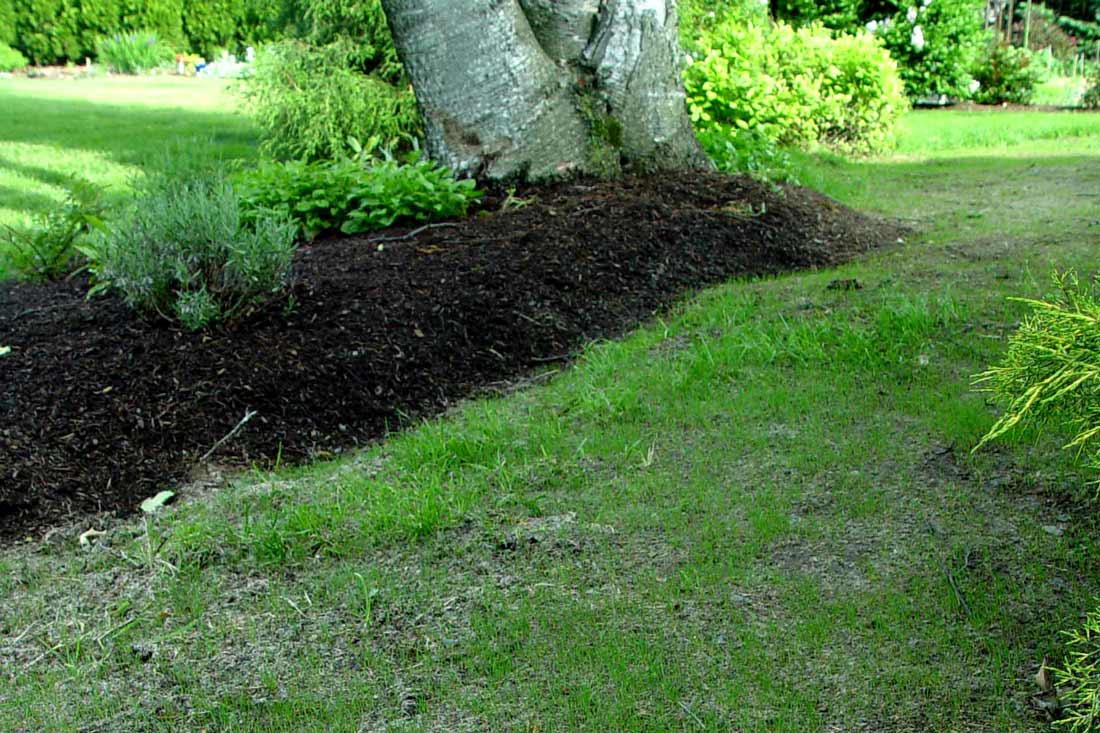 A seed mix dominated by fescue would work best for a shaded lawn area like this.
A seed mix dominated by fescue would work best for a shaded lawn area like this.
George Weigel
Grass commonly prefers sun and open areas, but that doesn’t mean you can’t grow grass in the shade. Besides the general practice of starting with reasonably good soil and supplying adequate fertilizer and water, the key to growing grass in shade is using shade-tolerant grass types.
Fescues are a family of lawn grasses that are superior at coping with shady and filtered-light situations. Whether you’re planting a new lawn in a shady area or trying to thicken a lawn that’s thinning from the encroaching shade of growing trees, look for seed mixes that are dominated by fescues.
 Fescues should emerge within 14 to 21 days after being planted.
Fescues should emerge within 14 to 21 days after being planted.
George Weigel
GreenView’s Fairway Formula Dense Shade Grass Seed Mixture is a seed mix that’s specifically aimed at successfully growing in the shade, using a combination of four different uncoated fescues (chewings, tall, hard, and red) along with a high-performing variety of perennial ryegrass.
Be sure when comparing your seed choices to investigate what the square-foot coverage is for the bag you intend to buy. Pound for pound price comparisons are not apples to apples if you are considering uncoated seed versus pure coated seed, or an all-in-one seeding product. All-in-one seeding products or coated seeds of the same bag weight do not contain as much actual grass seed, so you will get less square foot coverage.
Now’s the time
Late summer into early fall is the best time of year to plant grass seed – whether you’re starting from scratch or overseeding an existing lawn. The warm soil, the cooling days of fall, and the usually more-regular rainfall make September and October two of the best months for starting new grass. Keep newly planted seed damp (you may need to sprinkle it twice a day in hot weather), and you will see fescues start to emerge in just fourteen to twenty-one days.
Planting seed in the shade
In a new area, first, loosen the top layer of the soil approximately 2-4 inches or enough so that seeds will be able to be fully covered, and rake it smooth. Remove rocks, sticks, and other debris. Then scatter seed over the surface and lightly rake and tamp so that the seed is in good contact with the soil throughout the top quarter of an inch of ground. Don’t plant any deeper, and don’t use so much that seeds are touching or stacking on one another.
In an existing lawn, first cut the grass short and use a stiff garden rake to rough up the soil surface. Then scatter seed into the bare or thin areas and rake and tamp as with a new lawn. In both cases, retain moisture and keep seed from blowing/washing away or getting eaten by birds by topping the planted areas with a layer of GreenView Fairway Fertilizer Seeding Success.
GreenView’s Fairway Formula Seeding Success is a combination seeding mulch and starter fertilizer, that uses fully biodegradable pellets made from recycled newspaper, that are scattered over the seeded areas. The pellets expand to hold three times their weight in water, they’re weed-free (unlike straw), and they break down naturally so that no cleanup is needed. Seeding Success also includes a starter fertilizer and a tackifier that helps the seed germinate and hold in place.
Once the seeds sprout and new blades are up, keep the soil consistently damp until the ground freezes. That helps those young roots grow and establish before the cold season arrives.